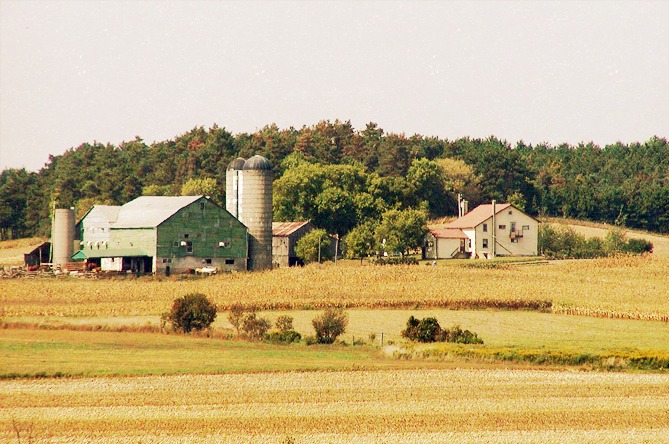The local food movement has been around for some time and is gaining popularity. There are many benefits and no real downside. Ontario offers numerous farmers who provide their local areas with; fresh produce, honey, dairy and meat. Supporting local businesses not only grows the local economy, it is highly beneficial to the health of our planet. If our planet is healthy, we have a better chance of staying healthy.
Canada is a major supplier of energy for local use and export, but we are also importing an excessive amount. According to Natural Resources Canada,
Canada also imported $40.3 billion of energy products, mostly crude oil, refined petroleum products and natural gas. Imports originated from a range of countries that included the United States, Algeria, Norway and the United Kingdom. [1]
The vast majority of our current energy sources are non-renewable and very harmful to the future of our environment. Even if we looked to our own supply of locally sourced fossil fuels for all of our energy needs we would still be contributing to the ever increasing green house gas emissions. What if we focused more on other locally sourced energy sources? We have the means to heat and power our homes with whats outside the comfort of our walls; the sun, wind and water. You can’t get much more local than that!
Our Current Energy System: Something Has To Give
Were all aware that fossil fuels are damaging our; planet, health and security. Lets take a quick look at the non-renewable front runners:
- Coal: Well start on a positive note; Ontario is the first area in North America to fully phase out coal use. This is an incredible advancement, considering 25% of Ontarios energy was produced by coal in 2003. Since Ontario is beginning to embrace renewable energy sources, this has made a tremendous positive impact on our environment. To put this into perspective; phasing out coal in Ontario, is the equivalent of taking seven million cars of the road.
- Nuclear: The bulk of our energy comes from nuclear, accounting for approximately 59% of our energy. Nuclear energy is considered to be clean, but safety is the issue. There have been some devastating effects due to complications with nuclear plants (Chernobyl being a prime example).
- Natural Gas: In Ontario, natural gas is the dominant source of heat for our homes. We all know that this past winter was long and cold. Gas prices are set to spike dramatically. For instance, if youre an Enbridge customer, it is likely that you will see a 40% increase on your overall bill. Yes, you may think that this past winter was abnormally cold and long, but it should be a warning sign. Natural gas prices will not stay low forever; its a dwindling resource.
Last December, the Ontario government estimated that by 2018 our power bills will increase by 42% (as stated in their long-term energy plan). Since renewable energy is fairly new in the eyes of many, it is being blamed for the rising costs. This is simply not true. Let me repeat this for emphasis. The increase in your hydro bill has very little to do with the increase in solar PV or wind turbines onto the grid.
I invite you to take a look at this study, which will give you a more thorough idea of our current energy bills. It should also be noted that in every instance where we have been asked to assist a client in monitoring their energy consumption we have found areas where energy is being wasted. The best way to fight high energy costs is through conservation and proper management, and renewable sources of energy. Remember, the cost of the sun or wind (or water falling) energy will never increase, only decrease.
Ontario is now coal-free (yeah!), and wind energy is a great alternative. When looking at wind energy, it was in the same price range as some of the riskier options. Not only are nuclear and gas options non-renewable, they negatively affect our environment. To give you a rough idea of predicted values; new gas generation would cost between $85 and $296/MWh (Megawatt hour). In terms of nuclear generation its estimated to cost between $87 and $143/MWh; while wind energy will cost around $115/MWh. Although cost is important, the fact that wind energy is sustainable makes this energy source priceless.
What Type of Sustainable Energy Can Canada Provide?
Currently, Canada is one of the leaders regarding renewable energy production (approximately 16.9% of Canadas energy is coming from renewable resources). With that being said, we are still mostly reliant on fossil fuels. Since sustainable energy sources are not at risk for depletion, they beg for more attention.
Wind
Wind is an incredible resource, that needs to be harnessed. Wind turbines can provide both mechanical energy (water pumping, mills etc.) and electricity. The provinces in which are at the forefront of wind power are; Ontario, Quebec and Alberta. With that being said, wind energy is only providing around 3% of the total energy output in Ontario. There is so much room for improvement.
Solar
Solar energy utilizes light and heat from the sun. This allows for buildings to be heated, and have electricity provided. There are two solar energy options;
- Solar Thermal panels: These panels allow for water or air to be heated for use in HVAC systems and domestic hot water.
- Solar photovoltaic technology: This technology converts energy from the sun into electricity.
Solar potential in Canada is highly promising, providing the best potential in central areas. Coastal regions tend to have higher cloud coverage. Canadas usage of solar energy has increased, but can still be improved upon.
Hydroelectricity
This renewable energy source accounts for approximately 23% of our energy output within Ontario. Energy harnessed from falling or moving water is; clean, in-expensive and reliable. There are around 200 water power facilities within Ontario alone. Provinces vary in terms of their hydroelectric generation (e.g. 90% of British Columbias electricity is generated through hydroelectric means).
Tidal
Although Ontario is a good distance from the coastal regions of Canada, tidal energy has so much potential. If you have ever visited the Bay of Fundy between Nova Scotia and New Brunswick, you know how breath taking it is. It is not only beautiful to visit, it has the potential to produce 30,000 MW of energy. This energy is being produced everyday; just as naturally as the tides. It is up to us to begin harnessing it.
Why Is It So important That We Locally Source Sustainable Energy?
When you think of locally sourced, food is probably what pops into your mind. Locally sourcing food is important from an eco-friendly perspective. For instance, a lot of our food travels approximately 2000 miles before it reaches our plates. Doesnt make much sense, and neither does non-local energy sources.
Here are some of the main benefits in terms of locally sourced, renewable energy:
- Financial Gain: Lets be realistic, people want to save money. Renewable energy sources such as wind and solar, do not require any means of transportation. If you have solar panels and/or a wind turbine on your property, there are no transportation costs. In fact, extra power generated can be sold and put back into the grid, either through net metering or the FIT program.
- Local Job Growth: Renewable energy will create jobs all across Ontario (up to 16,000 or more new jobs). Please feel free to watch this short video regarding the creation of jobs through green energy; http://www.youtube.com/watch?v=tsVRGILKOFo
- The Environment: Not only will locally sourced energy cut down on transportation pollution; renewable energy is an all around cleaner resource. Climate change is a serious threat. With sustainable energy, greenhouse gases (CO2) are not an issue. It is estimated that 81% of Canadas green house gas emissions are created through our production and use of energy.
- Security: With wind and solar energy in your own backyard, there will never be a concern for depleting resources. Instead, we can focus on conserving our national resources. Current non-renewable sources of energy are; costly, challenging to find and create more risk. It is crucial to be less reliant on international sources. Sustainable energy is a sure thing. It is not running out, and it can be harnessed in our own backyard.
- Efficiency: It is estimated that around 9% of our energy is lost through power lines. Energy needs to travel from the original source, to your home. If you have your energy source within your community or your back yard, efficiency increases. This is what they mean when they refer to renewable energy as “distributed power”.
Canada is one of the most beautiful and unspoiled countries in the world. We should be doing everything possible to keep it that way. It is time that we got serious about the harm fossil fuels do to our health, our country and our planet, and begin leading a new energy era. We have the resources and technology to make a positive impact right now. The cost of traditional sources of energy is on the rise, due to the increasing demand and growing scarcity of cheap sources. More importantly, these costs do not even include the environmental costs associated with fossil fuels. We can’t afford to continue on the same path. It’s time to take a leap, it is time to start a new era; clean, sustainable energy is the future.
1. Government of Canada. (April, 2013). Additional Statistics on Energy. Natural Resources Canada. Retrieved on April 16th, 2014, from http://www.nrcan.gc.ca/publications/statistics-facts/1239




































